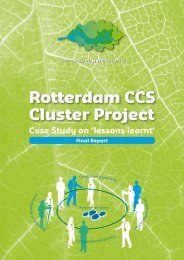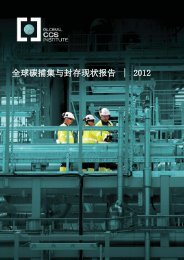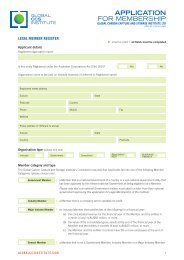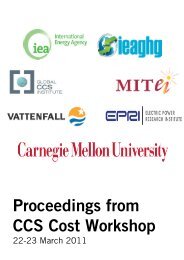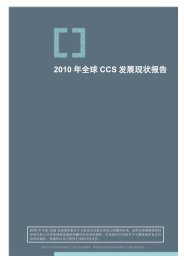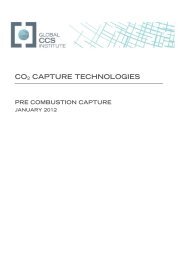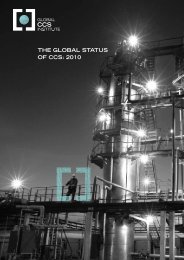Perceptions of CO2 Report - Global CCS Institute
Perceptions of CO2 Report - Global CCS Institute
Perceptions of CO2 Report - Global CCS Institute
- No tags were found...
You also want an ePaper? Increase the reach of your titles
YUMPU automatically turns print PDFs into web optimized ePapers that Google loves.
PropertiesKnowledge about CO 2 ’s properties varied greatly by topic as well as by country. Most respondentswere aware that CO 2 occurs naturally and is contained in air. Even in these cases, however, overone fifth <strong>of</strong> the respondents were not sure. Significantly more respondents in the Netherlands wereunsure whether air contains CO 2 ; 76.6% believed (correctly) that this was the case and 36% wereuncertain. On the other hand, in Japan, 83.5% thought air contains CO 2 , with 68.9% being verysure. Essentially, even though the Dutch respondents tended to pick the right answer, they weremuch less certain <strong>of</strong> their responses.According to research <strong>of</strong> H<strong>of</strong>stede (1980) there are some cultural differences between theNetherlands and Japan on the notion <strong>of</strong> “uncertainty avoidance”. H<strong>of</strong>stede argues that the anxietythat is created by uncertainty is resolved by developing religion, laws and technology. Japan isconsidered a country with high uncertainty avoidance, while the Netherlands is consideredmoderate in uncertainty avoidance. We can therefore not rule out that cultural differences mayhave influenced this difference in results between the Netherlands and Japan; Japaneseparticipants may be more inclined to avoid uncertainty and indicate that they are more certain <strong>of</strong>their answers. However, since Australia is usually considered as a “western” country with similarvalues and traits as in Europe, they would be more likely to resemble the Netherlands concerninguncertainty avoidance. Since Australian responses tended to resemble the Japanese more thanthe Dutch, it thus seems unlikely that such cultural factors have a large impact on the presentresults.Figure 4: Knowledge <strong>of</strong> all participants <strong>of</strong> <strong>CO2</strong>’s propertiesRespondents were highly uncertain about CO 2 ’s other properties. In the case <strong>of</strong> flammability, overone third <strong>of</strong> respondents stated that CO 2 is not flammable, but over half either believed it wasflammable or were unsure. Japan had the highest percentage <strong>of</strong> respondents (48.0%) who weresure it was not flammable, compared to 40.2% in Australia and only 23.3% in the Netherlands.Around half <strong>of</strong> respondents were not sure whether CO 2 breaks down easily, is soluble in water, oris lighter than air. In Japan, significantly more people knew CO 2 is soluble in water: 44.3% in totalversus 22.7% in Australia and only 18.7% in the Netherlands.22 | Understanding how individuals perceive carbon dioxide




